Dacia Duster vs Mazda MX-30 – Differences & prices compared
Compare performance, boot space, consumption and price in one view.
Find out now: which car is the better choice for you – Dacia Duster or Mazda MX-30?
The Dacia Duster (SUV) comes with a LPG, Full Hybrid or Petrol MHEV engine and Manuel or Automatic transmission. In comparison, the Mazda MX-30 (SUV) features a Plugin Hybrid engine with Automatic transmission.
When it comes to boot capacity, the Dacia Duster offers 517 L, while the Mazda MX-30 provides 350 L – depending on how much space you need. If you’re looking for more power, decide whether the 140 HP of the Dacia Duster or the 170 HP of the Mazda MX-30 suits your needs better.
In terms of consumption, the values are 5 L per 100 km for the Dacia Duster, and 18.30 kWh for the Mazda MX-30.
Price-wise, the Dacia Duster starts at 16300 £, while the Mazda MX-30 is available from 30800 £. Compare all the details and find out which model fits your lifestyle best!
Dacia Duster
The Dacia Duster represents a compelling choice for those seeking an affordable yet robust SUV in the market. With its rugged design and practicality, it tackles both urban commutes and off-road adventures with ease. Inside, the vehicle offers a spacious cabin that ensures comfort, while maintaining its reputation for delivering excellent value for money.
details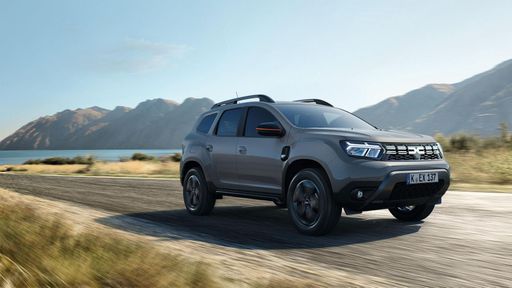 @ dacia-presse.de
@ dacia-presse.de
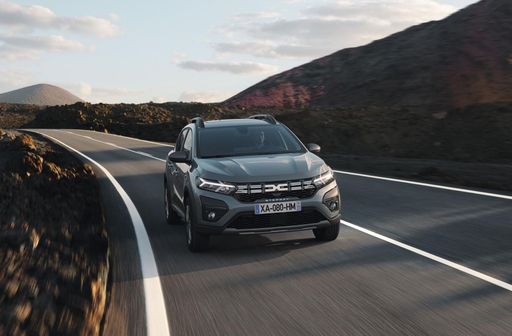 @ dacia-presse.de
@ dacia-presse.de
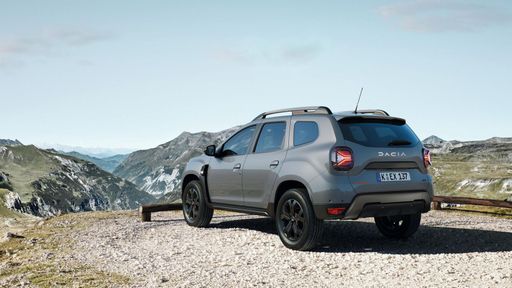 @ dacia-presse.de
@ dacia-presse.de
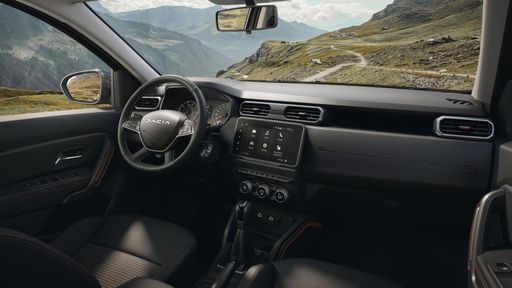 @ dacia-presse.de
@ dacia-presse.de
Mazda MX-30
The Mazda MX-30 is a compact crossover that combines unique design with an environmentally conscious approach. Its distinct exterior features a coupe-like silhouette and freestyle doors that offer practicality and style. Inside, the cabin boasts sustainable materials, creating a harmonious blend of modern aesthetics and eco-friendly innovation.
details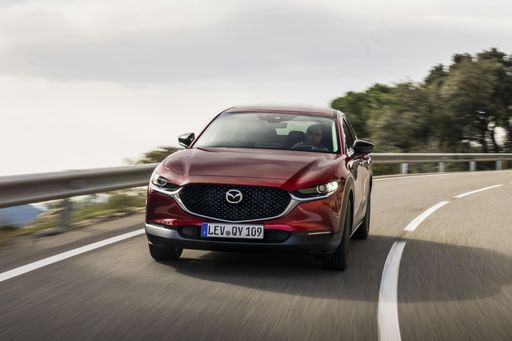 @ de.mazda-press.com
@ de.mazda-press.com
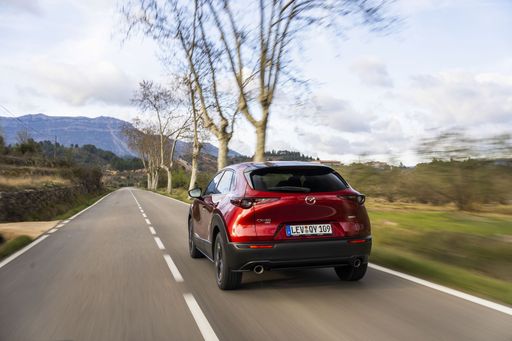 @ de.mazda-press.com
@ de.mazda-press.com
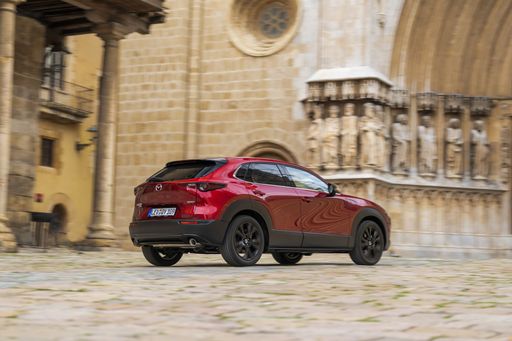 @ de.mazda-press.com
@ de.mazda-press.com
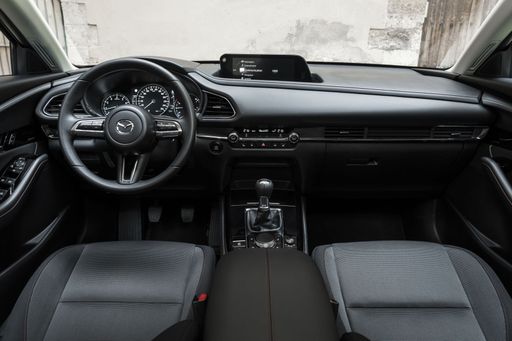 @ de.mazda-press.com
@ de.mazda-press.com

|

|
|
|
|
Costs and Consumption |
|
|---|---|
|
Price
16300 - 24800 £
|
Price
30800 - 37100 £
|
|
Consumption L/100km
5 - 8.1 L
|
Consumption L/100km
-
|
|
Consumption kWh/100km
-
|
Consumption kWh/100km
18.30 kWh
|
|
Electric Range
-
|
Electric Range
85 km
|
|
Battery Capacity
0.60 kWh
|
Battery Capacity
-
|
|
co2
114 - 147 g/km
|
co2
22 g/km
|
|
Fuel tank capacity
49 - 55 L
|
Fuel tank capacity
-
|
Dimensions and Body |
|
|---|---|
|
Body Type
SUV
|
Body Type
SUV
|
|
Seats
5
|
Seats
5
|
|
Doors
5
|
Doors
5
|
|
Curb weight
1351 - 1465 kg
|
Curb weight
1849 kg
|
|
Trunk capacity
430 - 517 L
|
Trunk capacity
332 - 350 L
|
|
Length
4343 mm
|
Length
4395 mm
|
|
Width
1813 mm
|
Width
1848 mm
|
|
Height
1656 - 1661 mm
|
Height
1555 mm
|
|
Payload
414 - 430 kg
|
Payload
402 kg
|
Engine and Performance |
|
|---|---|
|
Engine Type
LPG, Full Hybrid, Petrol MHEV
|
Engine Type
Plugin Hybrid
|
|
Transmission
Manuel, Automatic
|
Transmission
Automatic
|
|
Transmission Detail
Manual Gearbox, Automated Manual
|
Transmission Detail
-
|
|
Drive Type
Front-Wheel Drive, All-Wheel Drive
|
Drive Type
Front-Wheel Drive
|
|
Power HP
91 - 140 HP
|
Power HP
170 HP
|
|
Acceleration 0-100km/h
9.9 - 14 s
|
Acceleration 0-100km/h
9.10 s
|
|
Max Speed
160 - 180 km/h
|
Max Speed
140 km/h
|
|
Torque
160 - 230 Nm
|
Torque
-
|
|
Number of Cylinders
3 - 4
|
Number of Cylinders
-
|
|
Power kW
67 - 104 kW
|
Power kW
125 kW
|
|
Engine capacity
999 - 1598 cm3
|
Engine capacity
830 cm3
|
General |
|
|---|---|
|
Model Year
2024 - 2025
|
Model Year
2025
|
|
CO2 Efficiency Class
D, C, E
|
CO2 Efficiency Class
B
|
|
Brand
Dacia
|
Brand
Mazda
|
Dacia Duster
Discovering the Duster: Dacia's Affordable SUV
The Dacia Duster has long been a go-to choice for those seeking an affordable yet competent SUV. Known for its robust design and versatility, the new 2024 model year offers even more options to fit a variety of needs. Let's delve into the technical details and innovative aspects that set the Duster apart.
Engine Diversity: Tailoring to Your Needs
The Dacia Duster doesn't disappoint when it comes to engine variety. With options ranging from Gas and Voll-Hybrid to Benzin Mild-Hybrid, there's something for everyone. The engine power spans from 91 to 140 PS, providing levels of performance suited to different driving styles. Notably, the hybrid options are a nod to the growing demand for more eco-friendly vehicles while still maintaining affordability.
Efficiency and Performance in Harmony
Efficiency is a key highlight of the Duster lineup. Fuel consumption rates from 5 to 8.1 litres per 100 km make it a great choice for budget-conscious drivers. Coupled with acceleration times ranging from 9.9 to 14 seconds for 0-100 km/h, the Duster provides a balanced blend of economy and performance.
Precision in Design: Dimensions and Interior Space
The Dacia Duster stands at 4,343 mm in length, 1,813 mm in width, and height varies between 1,656 to 1,661 mm. These dimensions create an ample interior, comfortably seating five passengers with a boot capacity ranging from 430 to 517 litres. This is further enhanced with the different trim levels such as Essential, Expression, Extreme, and Journey, each offering various features.
Advanced Drivetrain Options
Dacia has always been keen on providing choice in drivetrain configurations to cater to a wider audience. The Duster is available with both front-wheel and all-wheel drive options, powered by either a manual or automatic transmission. This flexibility ensures that the Duster can handle both urban commutes and off-road adventures with equal competence.
Technical Specifications: A Deep Dive
The Dacia Duster is equipped with a variety of technical features that ensure a smooth driving experience. It features a range of torque outputs from 160 to 230 Nm, depending on the model. The vehicle's weight varies between 1,351 and 1,465 kg, which aids in its adept handling and stability. Moreover, the Duster meets modern safety expectations with CO2 emissions ranging from 114 to 147 g/km. The SUV's CO2-Effizienzklasse spans from D to E, reflecting its environmental considerations.
Conclusion: A Solid Choice in the SUV Market
The Dacia Duster remains a solid choice for drivers seeking an SUV that combines affordability, efficiency, and versatility. With its wide range of configurations and technical prowess, it continues to be a competitive player in the SUV segment. Whether you're after fuel efficiency, a bit more power, or the capability of off-road adventures, the Duster has you covered.
Mazda MX-30
The Electric Revolution: Mazda MX-30
The Mazda MX-30 represents a bold leap into the realm of sustainable mobility, bringing a distinct blend of style, efficiency, and innovation. As Mazda's first all-electric vehicle, the MX-30 is designed to capture the hearts of eco-conscious drivers while delivering the fun driving experience the brand is known for. Let’s delve into what makes this vehicle stand out in the increasingly crowded electric vehicle market.
Sleek Design Meets Practicality
The MX-30 is a compact SUV that exudes a modern aesthetic with its clean lines and contemporary silhouette. Measuring 4,395 mm in length and 1,848 mm in width, the MX-30 is designed to navigate city streets with ease. Its unique freestyle doors facilitate easy access to the front and rear seats, accommodating up to five passengers comfortably.
Advanced Electric Powertrain
At the heart of the MX-30 is Mazda's e-SKYACTIV drivetrain, available in both fully electric and plug-in hybrid variants. The electric version delivers a respectable 145 PS (107 kW), whereas the plug-in hybrid offers an enhanced 170 PS (125 kW). Both versions employ front-wheel drive with a single-speed reduction gearbox, ensuring a smooth and responsive ride.
Efficiency and Range
The MX-30 showcases commendable efficiency with a power consumption ranging from 17.5 to 17.9 kWh per 100 km. Drivers can expect a maximum electric range of 200 km for the fully electric model, while the plug-in hybrid offers 85 km on electric power alone. This ensures the MX-30 is well-suited for both daily commutes and extended journeys.
Elegant Interiors and Cutting-Edge Technology
Inside, the MX-30 presents a zen-like cabin featuring sustainable materials like cork and recycled fabrics, reinforcing Mazda’s commitment to environmental consciousness. The vehicle comes equipped with a host of technological advancements, including a digital dashboard and a user-friendly infotainment system that keeps drivers connected and informed on the go.
Performance and Handling
Mazda's dedication to driving pleasure continues with the MX-30. With an acceleration time from 0-100 km/h between 9.1 to 9.7 seconds and a top speed of 140 km/h, it promises an engaging drive. The low centre of gravity, courtesy of the battery placement, and its precise steering ensure the MX-30 feels agile and responsive, whether navigating urban environments or open roads.
Safety and Features
Safety is paramount in the MX-30, which boasts an array of advanced features, including collision avoidance systems and a reinforced body structure. It also scores well on CO2-efficiency, rated between Class A and B, making it a responsible choice for eco-minded consumers.
Conclusion: Mazda MX-30 – A Vision of the Future
In conclusion, the Mazda MX-30 is a testament to the brand's innovative spirit and commitment to sustainability. With its combination of striking design, efficient powertrains, and cutting-edge technology, the MX-30 is a formidable competitor in the electric vehicle market. Offering a blend of sophistication and performance, it is poised to win over motorists who seek an environmentally friendly vehicle without compromising on driving joy.
The prices and data displayed are estimates based on German list prices and may vary by country. This information is not legally binding.
